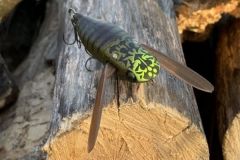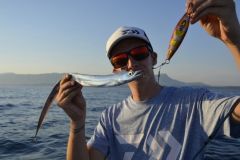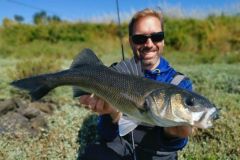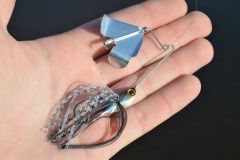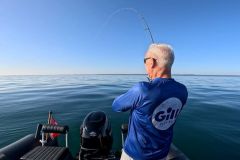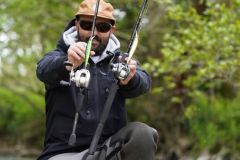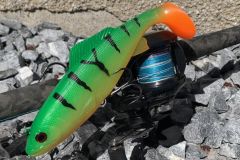The sea must be calm
A beautiful sea will facilitate the use of light lures and will allow you to keep the visual on it more easily. In these situations, I usually use lures with a rather discreet sound. The Sammy 115 from Lucky Craft is one of the lures adapted to these conditions.
On the other hand, the use of surface decoys in rough seas is quite possible. In such conditions, I use heavier lures, which stick to the water and with a fairly loud sound so that the fish can detect them despite the ambient noise.
The Tackle House Feed Popper in size 120 or 135 remains the lure I use most often in these sea conditions. The "pops", accentuated by a strong pull from the tip of your rod, will make the fish go up without any problem.

Surface lures are only used at shallow depths
It is true that most of the time these lures are used by shore anglers or fishing in little water. Their surface use allows them to be used on shallow areas where few lures are fished. That said, it is not uncommon to bring fish up to 10m in depth from the moment they are active.
It is not the depth that counts but the area of activity of the fish. I have caught some sea bass on the surface when the depth sounder indicated a depth of about 20 metres. On that day, the bass were hunting near the surface. That's why we tried successfully to catch them on the surface.
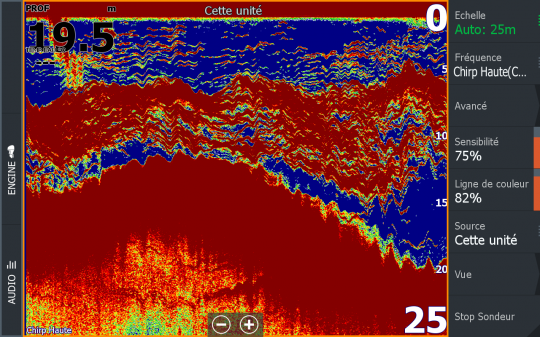
It's a summer peach
One of the conditions for fish to decide to go up and attack a surface lure is that the water temperature is high enough. That's why this fishing is often done from the spring onwards. However, it is common to catch sea bass on the surface even in November when the water begins to cool down. The determining factor is really the level of activity of the fish.
Early in the season, as in March, fish returning from spawning are relatively reluctant to surface. The near-shore area is often poor in fish foraging, with predators feeding mainly on crustaceans.
Conversely, at the end of the season, and provided that the months following the summer are mild, the water will cool down more slowly. The sea bass then gorge themselves on food to support the coming winter and spawning. Their behaviour changes and these fish become more aggressive. They don't hesitate to grab prey that is big enough to eat. Surface lures are therefore perfectly usable at the end of the season!
It's complicated to use and handle
Surface lures can cool down novice fishermen under the false pretext that their use is complicated. It depends on the model. Some are indeed more technical, others are simply animated by the technique called "walking the dog". This action is obtained by regularly retrieving the line, while animating the lure with twitchs.
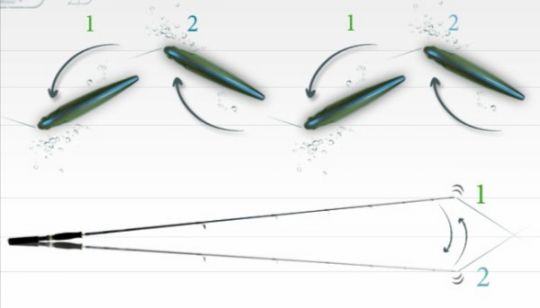
This is the basic animation for almost all surface decoys. The models that I consider the easiest to use are the Bonnie distributed by Illex and the Super Spook by Heddon.
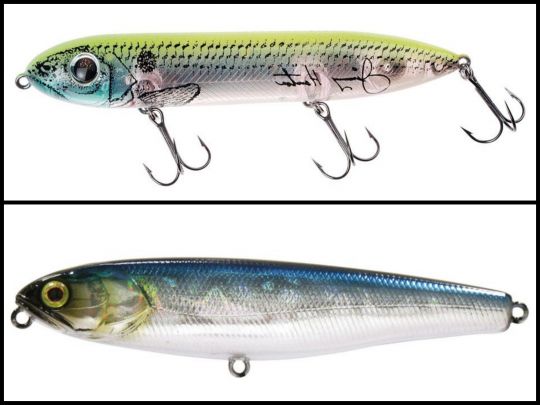
It's expensive
For surface lure fishing, whether on board or by boat, the equipment is identical. A rod with a length of 2.10m to 2.40m for a power of 10-40g will be perfectly suitable. As for the lures that will make up your box, it is useless to add them up. 2 or 3 well chosen lures will enable you to face all the situations encountered.
With this technique, you don't hang on much, if ever, and breakages, if they happen, will often be the result of a bad knot or damaged line. This is why your box, once made up, will follow you for a long time. On a personal note, my box only consists of a few models that allow me to fish in all circumstances:
- tackle House Feed Popper 120
- The Super Spook Heddon
- The Bonnie 128 Illex











